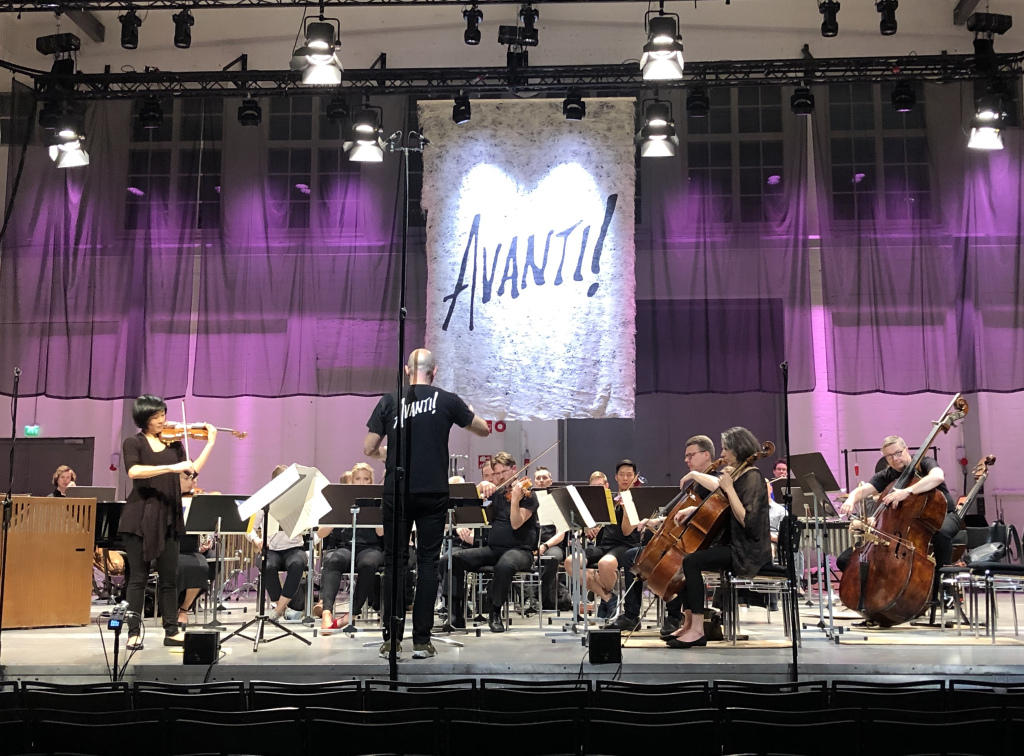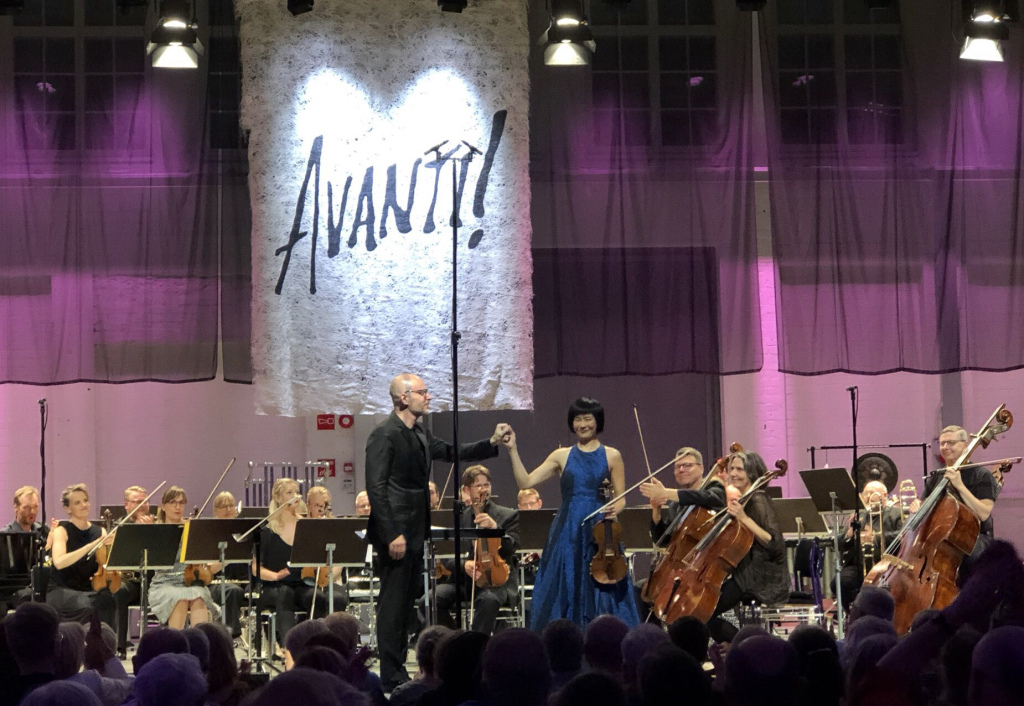AIM - ADVENTURES IN MUSIC
By Jari Kallio
June 30, 2019
original link
Spellbinding evening of Ligeti, Schreker and Strauss with Jennifer Koh, Avanti! and Baldur Brönnimann at Summer Sounds in Porvoo

Teaming up with the outstanding American violinist Jennifer Koh, Avanti! Chamber Orchestra and conductor Baldur Brönnimann, artistic director of this year’s Summer Sounds festival, presented their audiences with an intriguing Friday evening concert, titled as Strange Strings.
György Ligeti’s Concerto for Violin and Orchestra was written in 1990-92. Premiered by its dedicatee Saschko Gawriloff in Cologne in 1990 (first version) and 1992 (revised version), the concerto has since become one of the key pieces of late 20th century repertoire.
Ligeti’s penultimate concerto follows a five-movement scheme, roughly similar to Concerto for Piano and Orchestra (1985-88). In addition to contrasting tempi, each of the circa five-minute movements has its own textural identity as well.
The three fast movements are built upon intricate counterpoint, whereas the second movement opens with an extensive solo violin passage, with aching folk-like simplicity, something Ligeti would revisit with the opening movement of his Sonata for Solo Viola (1991-94). The fourth movement, in its turn, features quasi-static passages reminiscent of the mircopolyphonic works of the 1960s.
A prominent cadenza is included in the closing movement. Alongside the cadenza devised by Ligeti and Gawriloff and printed in the score, there are alternative cadenzas written by Thomas Adès and Patricia Kopatchinskaja, among others. Jennifer Koh performs the concerto with a cadenza written for her by John Zorn, and approved by the composer.
In addition to the extreme technical demands of the solo part, the score calls for a virtuoso ensemble, interlocking with the soloist in various ways. The twenty-five piece ensemble of strings, winds, brass and percussion also features an ocarina quartet, used in the 2nd and 4th movements.
The harmonic sphere of the concerto is enlarged with scordatura strings, natural horn harmonics and ocarinas, resulting in a thrilling sonic web. Yet, one of the most striking aspects of the concerto is the opulent melodic flow, reaching back to some of Ligeti’s early music.
As a whole, Concerto for Violin and Orchestra is one of the most compelling masterpieces by Ligeti, both immensely challenging and profoundly rewarding. The same could be said about the performance, one of spellbinding musicality.
Appearing out of nowhere, the concerto opens with a solo violin ostinato, joined by the ensemble of solo strings, resulting in a luminous contrapuntal fabric, coloured and accentuated by winds, brass and percussion. Rooted in exquisite teamwork by Koh, Avanti! and Brönnimann, the concerto was set in motion with excellence.
Emotionally, the second and fourth movements form a gravitational centre for the concerto, with their utmost delicacy and fragility, clad in outlandish harmonic guises. Performed with marvellous expressiveness and careful attention to detail, these movements provided the audience with a profoundly moving journey.
The short middle movement demonstrated the dazzling fluidity of the soloist, alongside the whole ensemble, and the conductor, with is seamless contrapuntal flow. In similar manner, the closing movement was a case in point of virtuosity, culminating in Koh’s whirlwind of a performance of the Zorn cadenza.

The Ligeti concerto was framed by two delightful pieces of 20th century hyper-romanticism, namely Richard Strauss’ Prologue to Capriccio (1941) in its original string sextet guise, as well as Franz Schreker’s Chamber Symphony (1916) for twenty three players.
The subtle Capriccio sextet, wonderfully performed by Avanti! strings, was a most welcome concert opener, with its eloquent textures of that bittersweet autumnal beauty of Strauss’ late music.
Closing the circle, Schreker’s one-movement Chamber Symphony was pure bliss, with its lush textures and extended sonata form, mixing together the traditional building blocks of a symphony in an ever fascinating manner. Echoing the structural outline of the Schoenberg First Chamber Symphony, Op. 9, written ten years earlier, Schreker’s score is, however, shrouded in a hue of sonic warmth, reminiscent that of a large orchestra.
With harmonium, piano, harp and celesta added, Schreker creates an illusion of full symphonic band at play, while maintaining chamber-like contrapuntal clarity. Performed with energetic schwung and formidable attention to detail by Avanti! and Brönnimann, the Chamber Symphony was an absolute treat. An important contribution to the Schreker revival, the performance reminded us, once again, about all that great 20th century music out there, still waiting to be rediscovered.
Copyright © AIM - ADVENTURES IN MUSIC
© Jennifer Koh, All Rights Reserved. Photography by Juergen Frank. Site by ycArt design studio